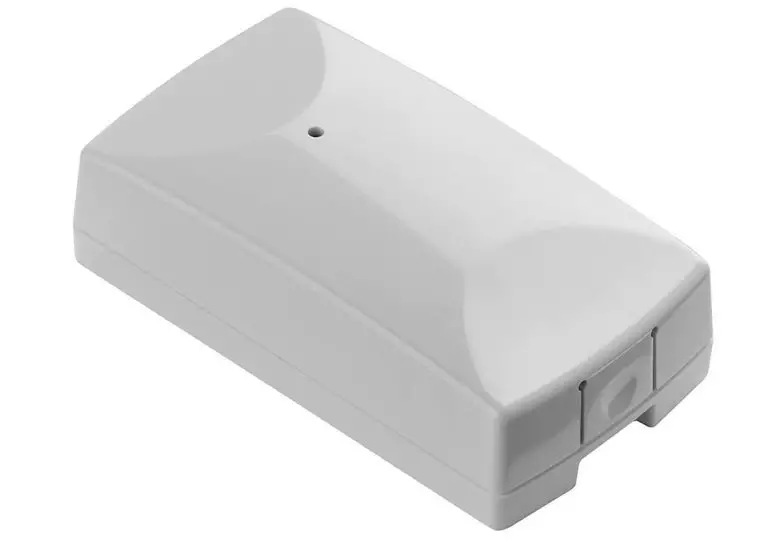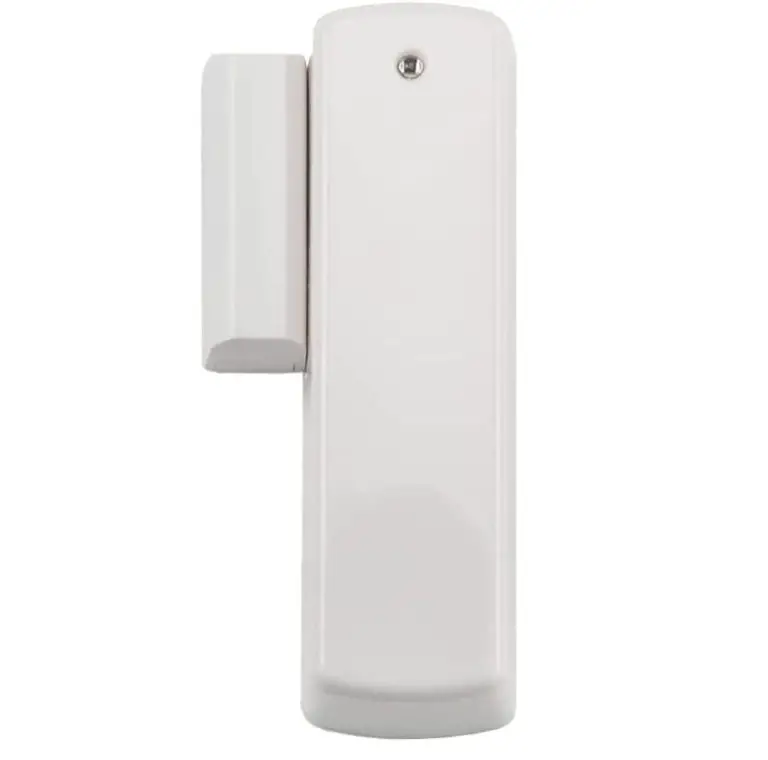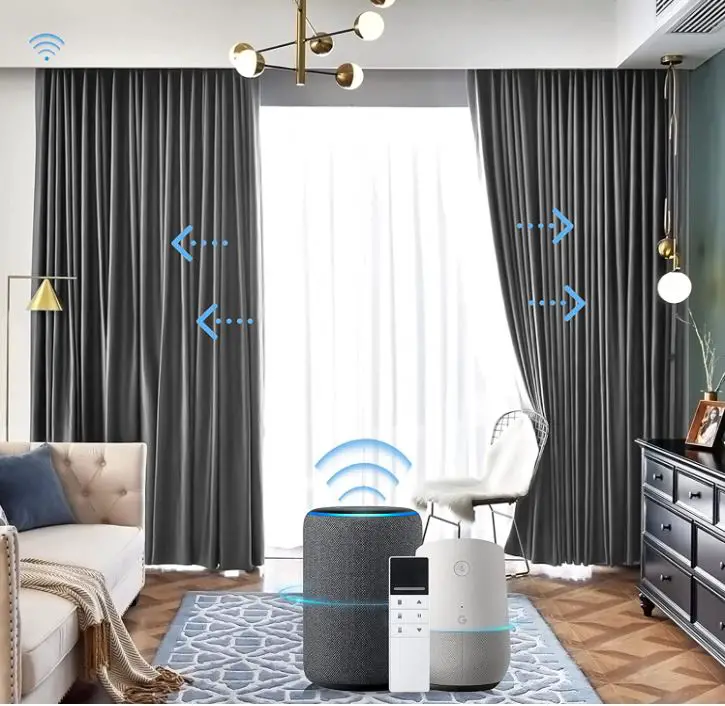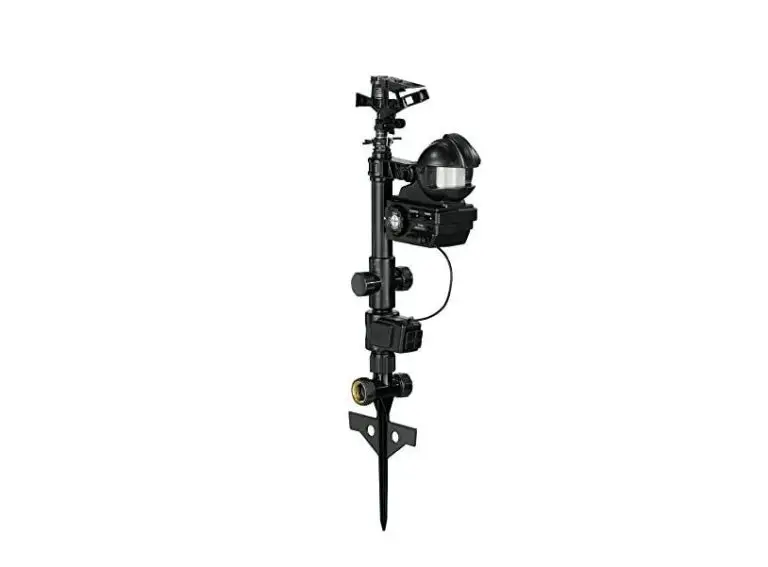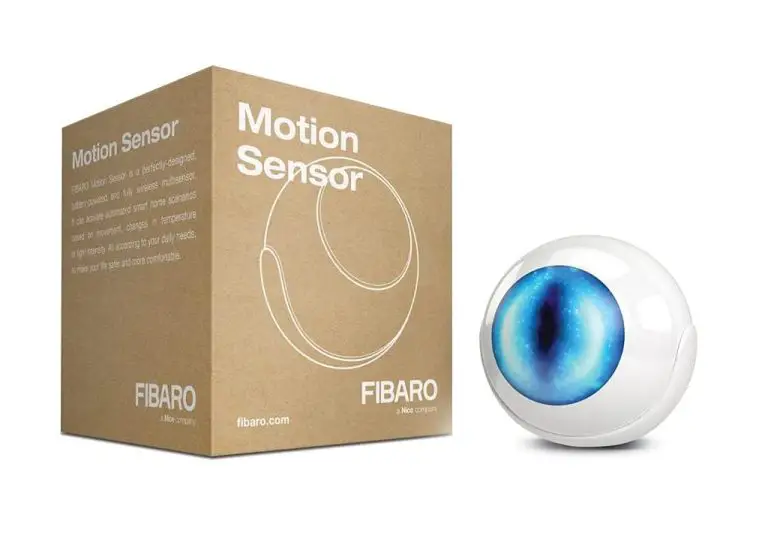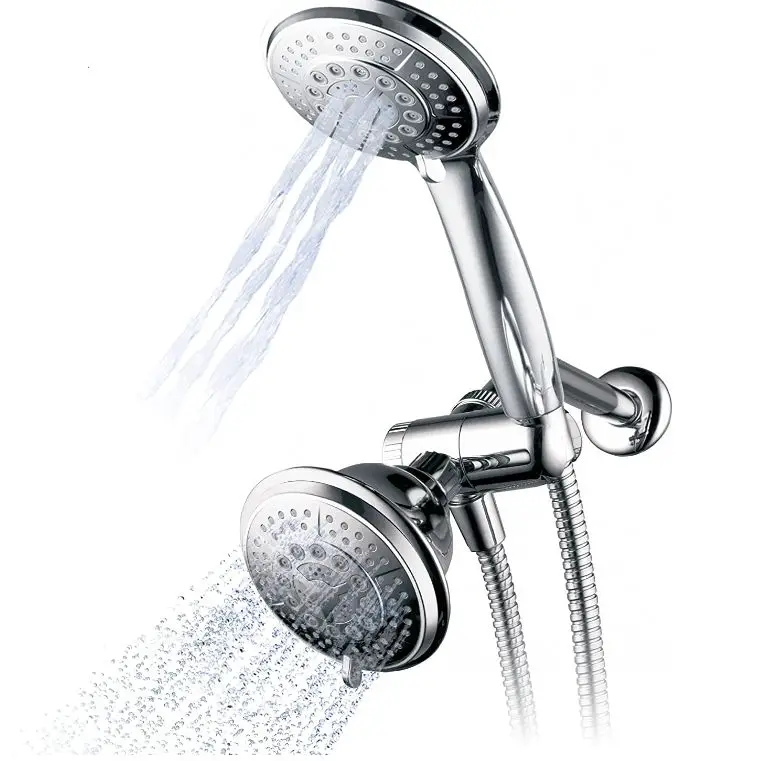Best Light Switch Timer Reviews and Guide
Introduction
A light timer is a simple way to save hundreds of dollars on your utility bill. The best light switch timer feature a programmable ON/OFF system, manual and automatic control, and a slim fit design to save space in your home.
A slow or unresponsive timer, on the other hand, can ruin your day. Defective batteries, limited programming options, and dim display screens are all warning signs.
Why need Automated Light Switch Timer
You may want a switch in your home to operate automatically on occasion. You might want to prevent burglaries while you’re away from home. Maybe you have a set wake-up time and don’t like stumbling around in the dark every morning. Perhaps you simply prefer the convenience of lights when you know you’ll be at home.
You can make your lights smarter without changing the bulbs if you want to upgrade to a smart light switch. One of the most important features of the smart switch is the ability to set your lights on a timer. We’re fortunate that many smart switches include hardware-based timers. Even if the function isn’t on the hardware, smart switches frequently have it accessible via their app. Controlling your house lighting will be more convenient and efficient once it is set up.
A light switch timer, as the name implies, combines a timer and a light switch. You can connect timers to the various lights in your home to automate their use.
However, before you buy one, consider the following:
Number of Switches:
Despite the fact that you can easily buy numerous light switch timers for various lights throughout your home, many of them come in packs of two switches. These two-switch timer packs typically offer better value for money while allowing you to power multiple lights at the same time.
Wattage:
You must ensure that whatever switch you buy can handle the power demands of your light bulbs. Fortunately, using these light switch timers to power household appliances should not be a problem because the majority of them have a maximum wattage rating of around 1800.
Warranty:
Your light switch timers should be dependable as well as capable of handling high power loads in order to last a long time and not interfere with your light bulbs. Fortunately, the majority of them come with a 1-year warranty, and a few even have a 5-year warranty.
Even though these are some of the most important characteristics and variables, there are others that you should be aware of.
As a result, in addition to listing various switch timers and their features and specifications, we have also provided a “Buying Guide” for the best light switch timers.
Best Light Switch Timer 2023
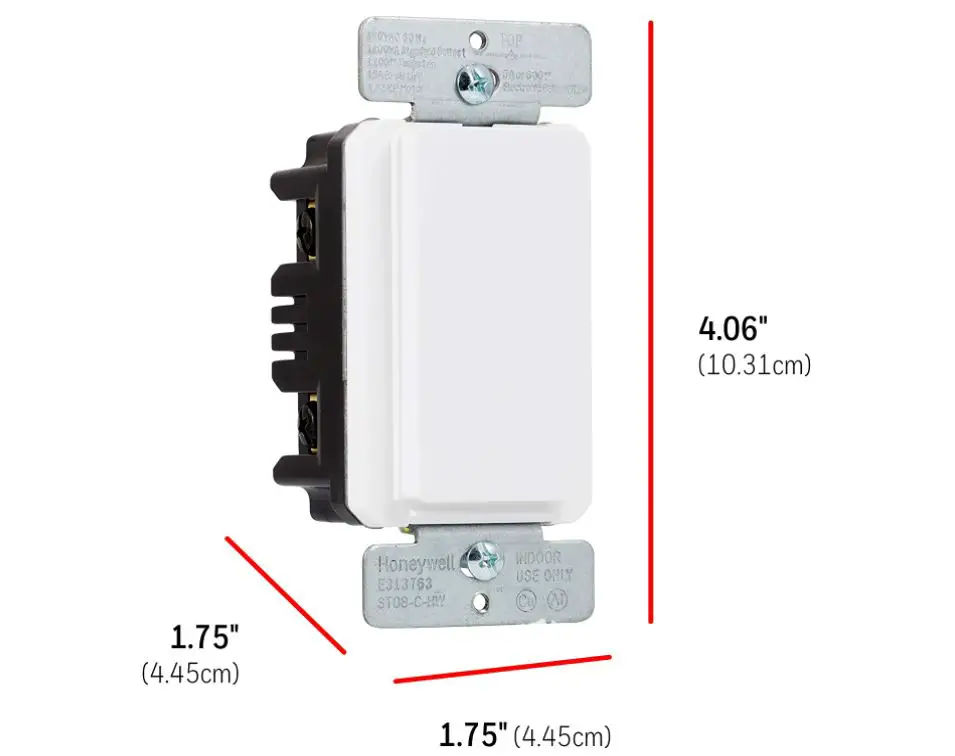
Honeywell Daysmart In-Wall Digital Light Switch Timer
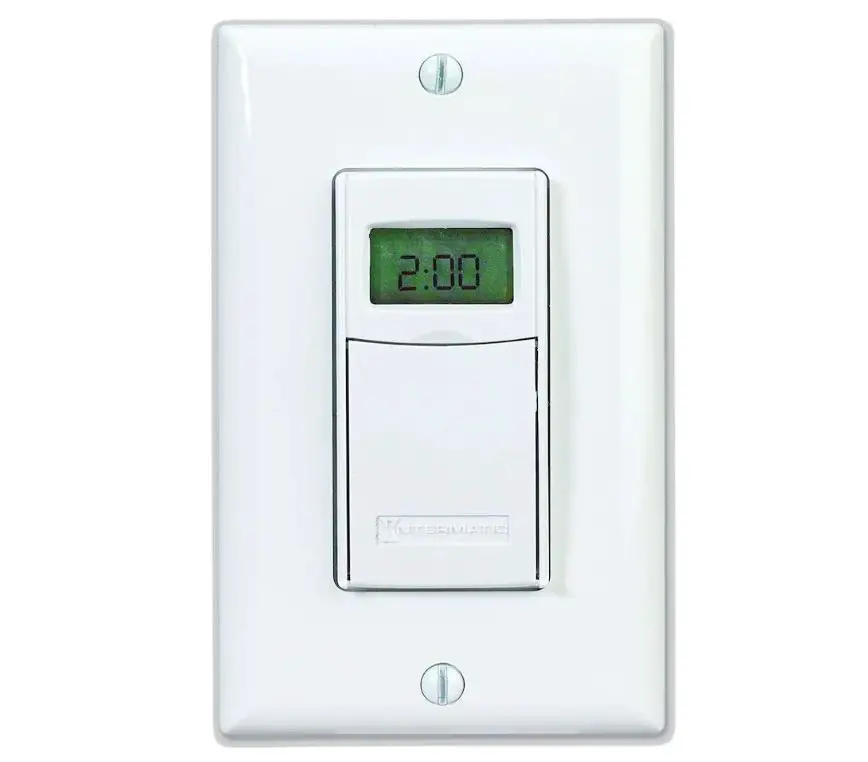
Intermatic Astronomic Digital Switch Timer
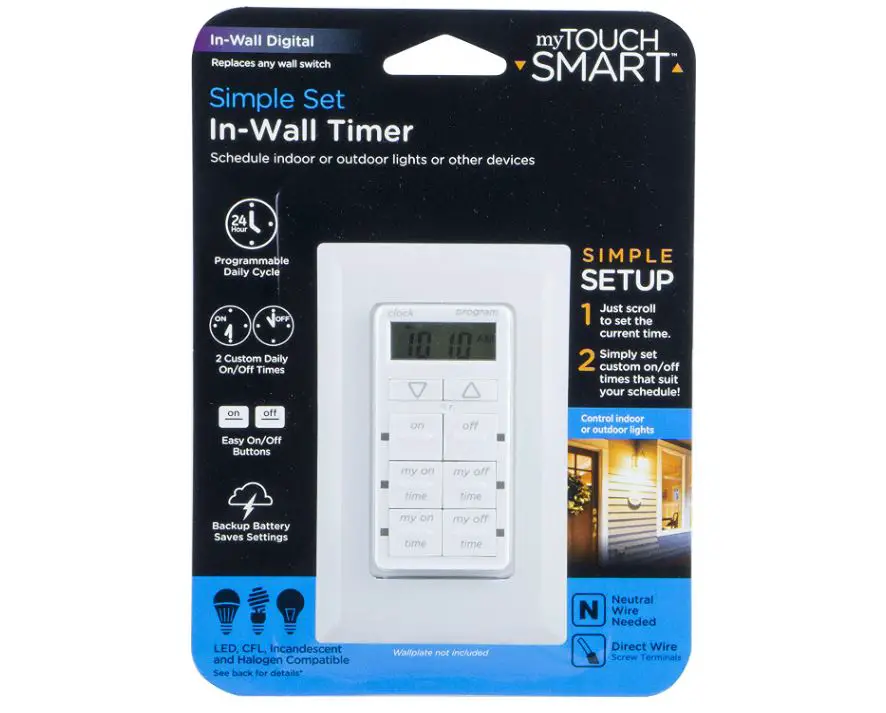
myTouchSmart In-Wall Digital Timer
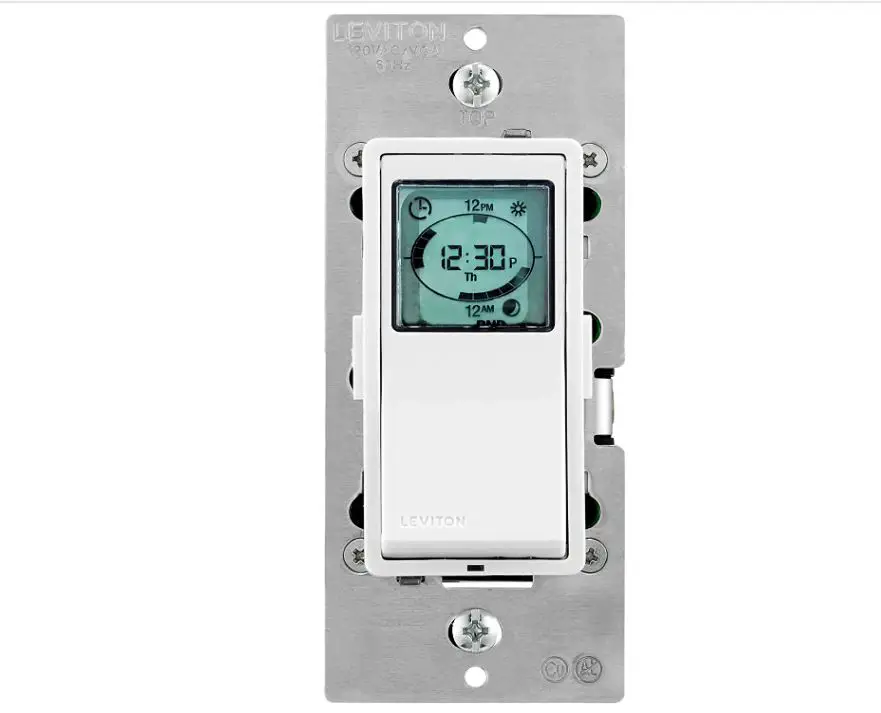
Leviton Programmable Light Switch Timer
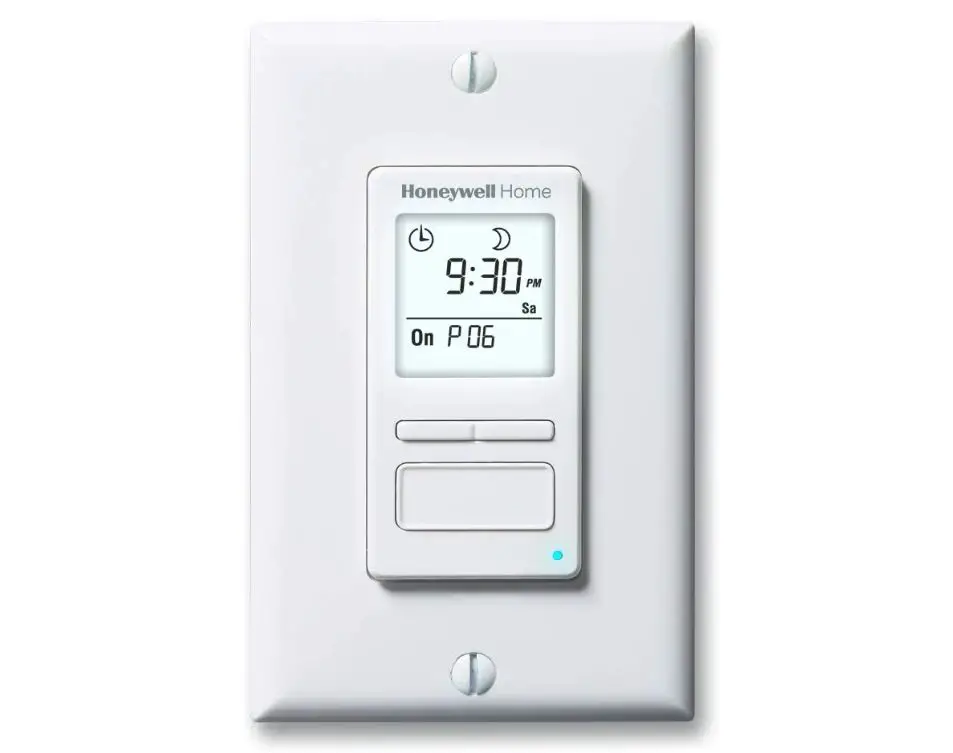
Honeywell Econoswitch Solar Programmable Switch
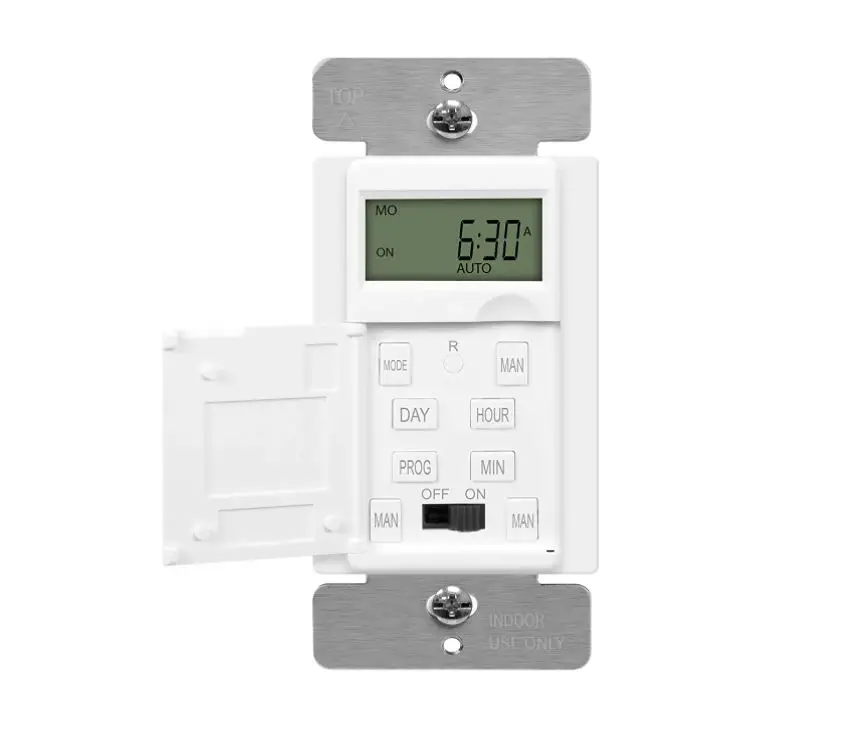
Enerlites Digital Programmable Light Switch Timer
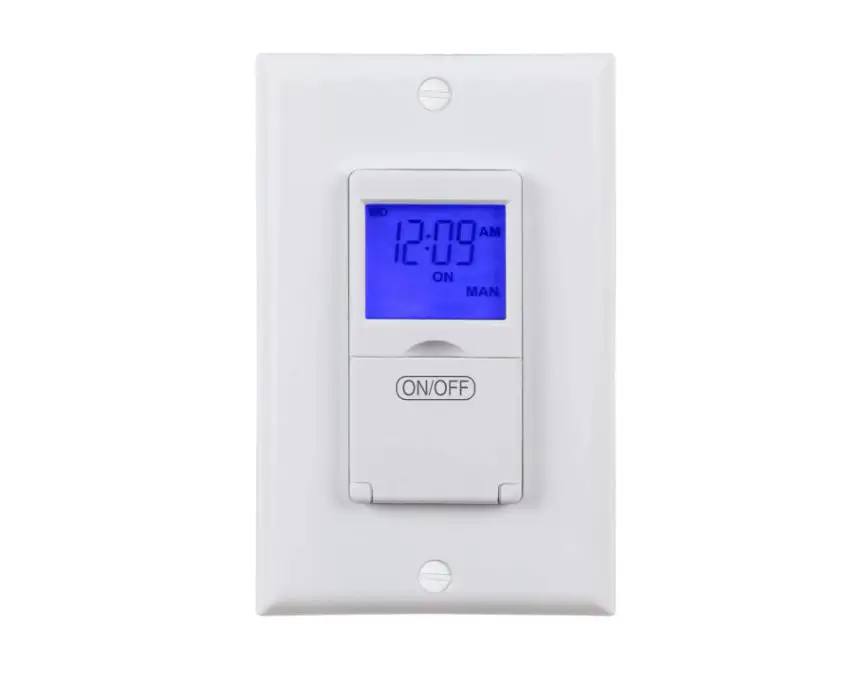
BN-LINK Programmable In-Wall Timer Switch

The Honeywell Daysmart is an in-wall timer switch with a flip-open cover. It has a more aesthetically pleasing appearance than a standard electric timer because all of the buttons are covered. When first installed, it appears to be a standard wall plate. The box includes a white and an almond face plate.
As a result, it will easily match the vast majority of wall plates on the market. When you lift the cover, you can see a small digital LCD panel that displays the time.
Below are three menu buttons that can be used for navigation. Under those are a group of eight additional controls that operate the basic timer features. When you select options for that timer mode, an LED on the button will light up.
This eliminates a lot of potential ambiguity, making Daysmart easier to understand than competitors.
Daysmart has an average compatibility rating. Almost all types, including LED, CFL, incandescent, and halogen lights, are supported. It does not, however, support appliances or work with dimmable lighting.
It is designed to operate on standard US voltage and frequency of 120 volts and 60 hertz. Furthermore, the current is the standard 15 amps. Despite this, we would not use the Daysmart to control a light that was connected to an outlet.
There is simply too much risk of someone unintentionally plugging in a vacuum or something else and breaking the switch. Because it supports three-pole switches, it can be used in corridors and other similar situations.
Let’s go through the different timer buttons in the most logical order. The first button is a simple on/off switch that can be used to override the existing programming. A second button press returns the Daysmart to normal operation.
The unusual sunrise-sunset mode that gives Daysmart its name can be found by pressing the following button. When you enable this mode, Daysmart will turn on your lights at dusk and turn them off at dawn. This function is unlikely to be useful in most homes.
It is, however, ideal for apartment lobbies and other well-lit public areas during the day. To use this mode, you must enter your latitude and longitude. The Daysmart will then be aware of the sunrise and sunset times in your area.
The next two buttons allow you to set a seven-day timer. When you press the “On Time” or “Off Time” buttons, the days of the week will appear on the screen.
Choose the desired day using the arrow buttons, then select it using the menu button. The clock will then start flashing. Using the arrow buttons again, select the time you want the switch to turn on or off.
Using the “Sunset On” and “Sunrise Off” buttons, you can program the switch to operate in sunrise-sunset mode on specific days. This may be useful for businesses that only operate during the week.
The last button is the Countdown mode button. You can set a specific time for a single light to turn on or off when using this mode. This is fantastic because you can set porch lights and forget about them.

Because of its 15 amp lighting control, the Intermatic Astronomic Digital Light Timer is the best light switch timer. This enables the timer to be installed in both commercial and residential settings.
To help improve energy efficiency and automate routine lighting schedules, users can program 40 ON/OFF events. It simplifies daily use by including an Astronomic feature that allows users to turn on and off specific times of the year based on geographic dawn and dusk patterns. This gives you more control over the device year after year.
The large LCD screen displays the load status, mode, and time of day. It has a simple installation procedure and dependable battery power. To keep the programming in its memory, the battery does not use house power.
Because there is no neutral wire connection, this timer is easy to install and retrofit. Simply connect Intermatic’s outdoor light switch timer and it will control both LED and CFL lights.
It also has an automatic DST (Daylight Savings Time) feature that keeps the schedule in sync throughout the season with no additional maintenance required. This is the light switch timer for you if you want a low-cost light switch timer with a variety of useful features.

The MyTouchSmart In-Wall Digital Timer has a more traditional design than the Daysmart. The LCD panel and buttons are never hidden behind anything and are always visible. They aren’t ugly, though, and the LCD doesn’t have a backlight that will keep you awake at night.
On either side of each button is a row of three LED lights. When you press one of the timer buttons, the corresponding LED illuminates. This only happens while you’re setting the timer and helps you stay on track.
In addition, two arrow keys are located directly beneath the LCD display for navigating timer menus.
The MyTouchSmart is designed to work with a variety of devices. It supports dimmable LEDs and CFLs, as well as being compatible with nearly every type of lightbulb, including incandescent, halogen, CFL, and LED. The same is true for engines.
This could refer to kitchen appliances, outside lighting, or exhaust fans. The switch is rated for 120 volts, 15 amps, and 60 Hz, which is the standard voltage in the United States. It can withstand 1200 watts of power, which is typically less than the full 15 amps required. However, you will be able to run a few fans without any problems.
Although MyTouchSmart supports more devices, Daysmart’s timing features are a bit simpler. The switch can first be turned on and off by using the top two overrides.
When neither of these buttons is pressed, the MyTouchSmart will operate according to its predefined settings.
Below that is a group of four buttons for setting two different timers. As long as the timers are turned on, they will run indefinitely. So you can start your kitchen fan in the morning and turn it off before leaving for work.
Set the second timer to turn it back on when you get home and before you go to bed. Easy!

Because of its affordability and performance, the Leviton Programmable Light Timer with Astronomical Clock is a great value light timer switch. The large backlit display allows users to easily see the timer settings. At a glance, this makes it easier to keep track of the settings.
The astronomical clock in this light timer ensures that it requires little maintenance. It enables users to program the settings based on Daylight Saving Time and the local sunrise and sunset times.
Its built-in battery also does not need to be replaced. As a result, even if power is interrupted, the programmed settings are retained. Users are not required to reset their devices in the event of an emergency surge.
This product also includes a professional mode, which allows you to program 50 ON/OFF settings per day. Users can customize the lighting for weekdays, weekends, all days, or a combination of days. As a result, you’ll have enough customizable settings to ensure that your lighting is as efficient as possible.
Get this light switch if you’re on a tight budget and need a dependable way to manage your home lighting system.

The Honeywell Econoswitch has a much simpler design than the previous two timers we looked at. Two slim buttons replace several large ones just below the LCD panel.
There is also a larger one that functions as a touchpad slider. A blue LED in the bottom right corner indicates the status of the switch. There isn’t much of a learning curve because the controls are contextual and intuitive. Furthermore, there is a tempting selection on the screen.
You can choose whether or not to be automatically backlit. You can turn it off or adjust the night light to a low setting in the menu. You can even turn it all the way up in an emergency.
The Econoswitch is compatible with the vast majority of lightbulb types. It is compatible with fluorescent tube ballasts as well as LED, CFL, incandescent, and halogen bulbs. It is also compatible with appliances. It can produce 1800 watts of power at 120 volts and 15 amps in the United States.
With this, you’ll have enough starting wattage to power a 1500-watt, 15-amp device. It also implies that the Econoswitch can be used to safely power an outlet-plugged light. A 15-amp breaker will trip anything that could be connected and cause the switch to break, keeping you safe. The Econoswitch also comes with a 1-year manufacturer’s warranty for added security.
Since the Econoswitch has numerous other settings, let’s start with the most basic. By clicking the large control at the bottom, you can quickly turn on or off your switch. You can also navigate the menu to select specific on and off hours for different days of the week.
If you prefer, you can create a single timetable for each of the seven days. You can select sunrise or sunset, or enter a time, such as 9 a.m. You must provide your latitude and longitude for the Econoswitch to determine your local times. This now works in the same way as the Daysmart’s sunrise-sunset feature.
The Econoswitch, on the other hand, has a few more tricks up its sleeve. One advantage is that it automatically adjusts for Daylight Saving Time, eliminating the need for an additional device. You can also set the lights to change for an hour before or after sunrise or sunset.
If your lawn is shaded or your picture window faces directly into the early sun, you will appreciate this feature. The Econoswitch also includes a “random” mode. This mode does exactly what it says on the tin.
Your lights will turn on and off abruptly, giving the impression that someone is at home. We call this “security mode” because it is such an effective deterrent to theft.

The best buy light switch timer is the Enerlites Digital Programmable Timer Light Switch. It includes the ability to programme 18 ON/OFF timer settings, giving you more control over your home lighting.
It works by pre-programming lighting based on usage. This model’s performance isn’t as strong as some of the other options because it lacks extras and features.
It also has a low build quality. The door panel that provides access to the controls frequently fails to close completely.
This model may be simple to install, but that isn’t much of a selling point when it performs so poorly.

Despite being a lesser-known brand of light switch timers, BN-Link typically provides cost-effective options with high performance.
The BN-Link light switch timer is the most effective option on this list while also being the most reasonably priced, providing excellent value for money. This is because, despite being a low-cost option, it has a relatively high wattage rating of 1825 watts.
As you might expect, this low-cost option only includes one light switch in the box. Despite the fact that it comes with a one-year warranty, the product’s build quality unquestionably reflects its low price.
Different Light Switch Timer Types
Mechanical timers are likely something you recall from the dark, prehistoric decade of the 1990s when dinosaurs roamed the earth. These were timers that could be plugged into an electrical socket to power a variety of appliances. They were especially popular with frequent travelers because they could be used to turn a few lamps on and off while you were away.
They usually worked by inserting groups of pins into a rotating dial. As the dial turned, the pins turned the switch on and off.
Mechanical bathroom timers, in a similar vein, are nothing new. When a dial is turned, the switch will activate for five to one hundred minutes. In hotels, they are frequently used to power infrared lighting and bathroom fans. However, there aren’t many more practical applications for them.
Simply put, digital timer switches are the next step in the evolution of this technology. They function similarly to a mechanical bathroom timer by replacing a wall light switch. They also allow you to program the on and off times of your lights, similar to a mechanical plug-in timer. A mechanical timer, on the other hand, has several limitations. A single 24-hour dial can only be used to program one schedule.
With an automated light switch, you can often set a different schedule for weekends or even a seven-day plan. We’ll be looking at this type of switch today.
Keep in mind that this is not the same as a smart switch. According to previous reviews, there are some good smart switches on the market. App control, motion detection, night lights, and other comparable “extras” are typically provided. Some of them allow you to set a timer, while others do not.
Buying Guide for the Best Light Switch Timer
In many cases, you may want the lights in your home to turn on automatically in a specific location at a specific time. This can include aquarium lighting, nightstand lamps, outdoor lighting for the front or back yards, planter box lighting, and a variety of other items.
To make this listicle extremely informative, all of these switch models have been listed along with pertinent details such as features and specifications. Going one step further, here is our comprehensive buyer’s guide to the best light switch timers:
Number of Light Switch Timers
When purchasing light switch timers, one of the most basic yet critical considerations is the number of switches included in the box. In general, you’ll find that the majority of them only have one light switch timer.
Fortunately, you can easily purchase more switches if you want to use a switch timer to power various lights in your home. Some of them, however, come in sets of two-switch timers. When you buy such packs of light switches, you usually get more for your money, which is always a plus.
Wattage
One of the most important factors determining how well a light switch timer works is its wattage rating. As the name implies, this rating simply informs you of the maximum power load that a switch can handle.
Consider whether you want to add a timer to one of your home appliances or use a single switch to power several high-watt bulbs. Light switch timers have an average wattage rating of around 1800 watts, which is far more than you will ever need for light bulbs.
Warranty
Even if this has no bearing on how well a light switch timer performs, it is critical to get a dependable light switch timer. This is to ensure that whatever product you choose will last a long time before you need to replace it.
Almost all of the light switch timers discussed in this article have a one-year warranty. Having said that, there are also options for up to five-year warranties.
Frequently Asked Questions
What is a smart timer?
You can use your phone to control the on and off schedule of your lights, either on the local network or while you’re away, by using a smart timer that replaces a light switch and connects to your home wireless network.
Some smart timers include physical controls right on the light switch, allowing you to make changes without the need for a smartphone app. Dimming capabilities are frequently found to be provided so that lights can be turned on and off gradually.
Can you put a timer on the lights?
A smart light switch is one of the best ways to add a timer to lighting. After some setup, you can use dimming, set schedules, and pair it with your phone for remote control.
Do smart light switches have timers?
Smart light switches frequently include timers. Timer hardware controls are more difficult to find because they add a lot of complexity. However, some timers may include that functionality within the device, making it entirely hardware-controlled and eliminating the need for wifi or mobile apps. This may be preferable for those who have not embraced smart home technology or for rural setups without internet access.
Is it hard to install a smart timer?
Although smart timer installation instructions are provided, it is best to hire a qualified electrician if you are not comfortable working with electronics. In essence, you’ll need to unhook the old light switch, connect the new one with the same wire, and then turn off the power to the outlet at the breaker.
In many smart timers, a common wire, also known as a c-wire, is required for a reliable power supply. If there isn’t one on your light switch, you’ll need to find one. See our article on how to install a light switch for more information.
Should I get a smart light switch or a smart bulb?
Choosing a smart light switch or smart bulb is dependent on your level of technological sophistication. Some people prefer real physical buttons, and the convenience that mobile apps and sophisticated color options bring isn’t worth the hassle that smart bulbs cause. Smart bulbs, on the other hand, maybe a better buy if you’re tech-savvy and comfortable with apps.
Depending on the model, the two solutions may have significant cost differences. It is possible to have both low-cost and high-cost smart switches and lamps.
Final Verdict
After carefully examining each of these automated light switch timers, it’s time to decide which one is the best. If you’re looking for the best based solely on statistics, it’s difficult to argue against the Honeywell Econoswitch. That small beast can do anything. The sunrise-sunset mode is fully functional and provides the extremely useful capability of slightly offsetting your clocks.
Although the seven-day timer is quite common, it is still highly valued. The random mode, on the other hand, is by far the best feature. If you’re concerned about home security, you’ll appreciate the ability to deter burglars while you’re on the road.
Having said that, the MyTouchSmart is very inexpensive and has a lot to offer. It’s great to see a switch that supports appliances, as most in this price range don’t have many features. However, there are only a few timer settings available, and there is no seven-day feature.
The Honeywell Daysmart also provides a distinct type of value. It has a sunrise/sunset feature and is almost as cheap as the MyTouchSmart. That is almost unheard of, yet Honeywell has one of the best products available. It also has a seven-day timer, allowing you to plan ahead for weekends. However, it does not support appliances.
